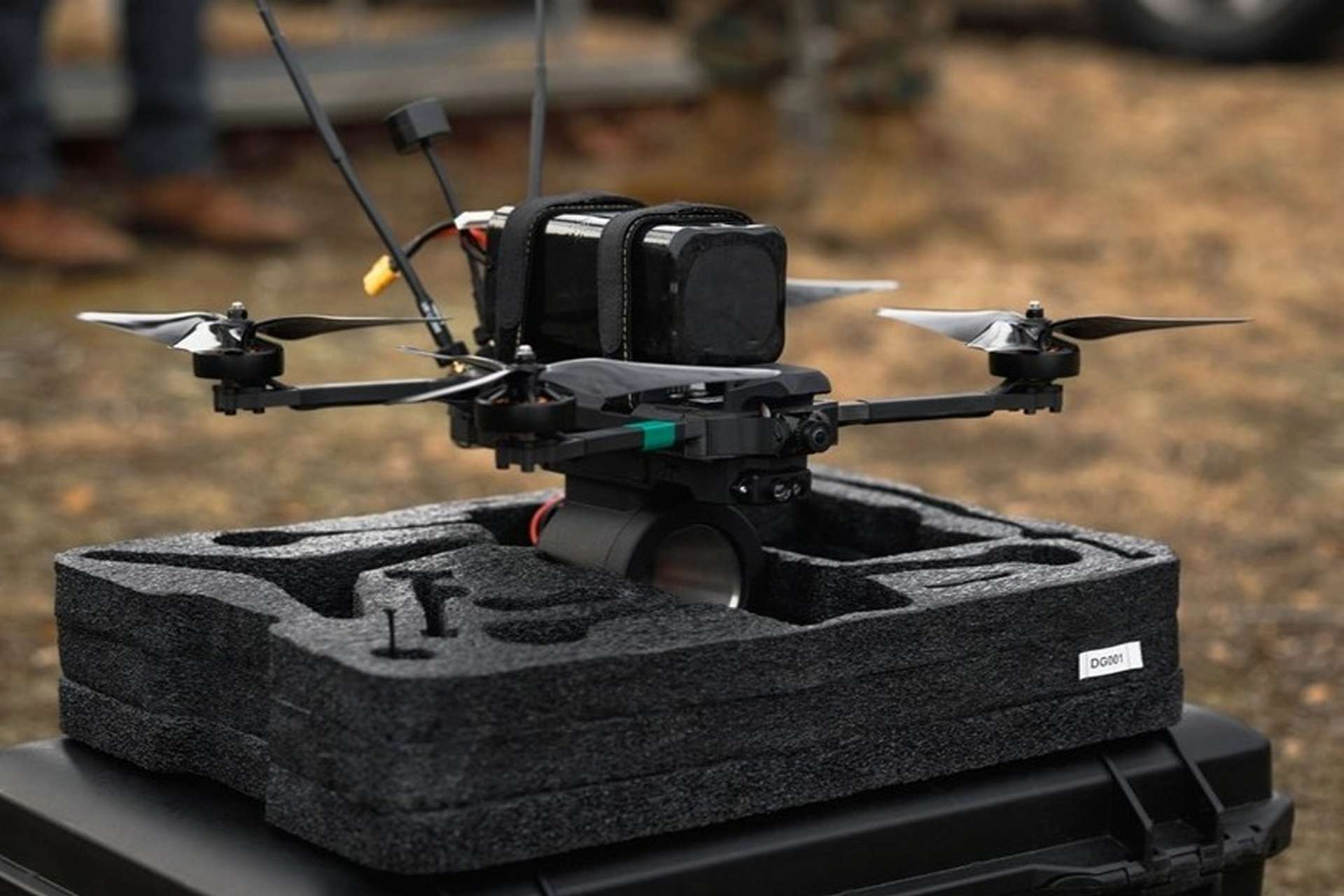US Drone Warfare Enters New Era as Neros Aims to Produce One Million FPV Drones Yearly

{loadposition bannertop}
{loadposition sidebarpub}
On Thursday, July 3, 2025, Neros Technologies’ bold plan to deliver up to one million Archer FPV drones annually to the U.S. military could redefine how the Pentagon wages drone warfare. Founded just two years ago, this young Californian manufacturer says it’s ready to meet unprecedented demand if it secures major defense contracts. The initiative echoes lessons learned from Ukraine’s battlefield, where low-cost drones now shape modern combat tactics. As reported by Defense News, the Pentagon’s response may determine if America can truly scale a new era of mass drone deployment.Follow Army Recognition on Google News at this link
Backed by battlefield lessons and a readiness to prove its manufacturing promise, Neros stands poised for a transformative moment, provided Washington’s policymakers match words with resources (Picture source: U.S. Army)
Neros Technologies, started as a small venture convinced that cheap, agile FPV drones would soon be indispensable in modern conflict. Early visits to Ukraine’s frontlines gave the team firsthand insights into what such systems needed to endure and deliver: rapid deployment, rugged performance, and real-time adaptability. The result was the Archer, an 8-inch quadcopter carrying a 2 kg warhead over 20 km, flying day or night and in all weather, a capability now actively tested by the U.S. Army. Unlike many commercial drones, Archer units avoid Chinese components, aligning with the Defense Innovation Unit’s supply chain security requirements, and making Neros one of only two FPV suppliers on the DIU’s trusted list.
The operational pedigree of the Archer system is growing fast. In February 2025, Neros secured a contract through the International Drone Coalition for 6,000 drones to Ukraine, a deal symbolic of the West’s pivot to mass-produce affordable, disposable loitering munitions. Ukraine’s experience is telling: local factories built over two million drones in 2024 alone, a stark contrast to the Pentagon’s more cautious approach. Compared to other legacy drone programs like the expensive Switchblade or loitering munitions from AeroVironment, Archer offers a stripped-down but effective alternative, designed for saturation attacks and swarm tactics. It’s a disruptive evolution mirroring how cheap FPV drones reshaped battlefields in Eastern Europe faster than traditional procurement pipelines could adapt.
Strategically, a Pentagon contract enabling production of one million units per year would mark a seismic shift in the U.S. military’s posture toward attritable drones. While Project Replicator, launched in 2023, promised to field thousands of drones by this August, critics argue the effort still falls short of the massive volumes seen in Ukraine. The implications reach beyond procurement: mass-produced FPV drones would allow the U.S. to keep pace with adversaries investing heavily in drone swarms, saturate enemy air defenses, and redefine cost-benefit dynamics for targeting high-value assets. It also signals growing alignment between frontline soldier demands and institutional support, an area that historically struggled to close the gap between innovation and acquisition.
From a budgetary perspective, the scale of Neros’ ambition is unprecedented for a start-up, but far from unrealistic given its venture backing from figures like Peter Thiel and Sequoia Capital. At present, production stands at about 1,500 units monthly, expected to hit 10,000 by year’s end, enough to satisfy both U.S. military and export orders. Yet Monroe-Anderson, the CEO of Neros, warns that without an overarching contract, the leap to one million drones per year will remain aspirational. So far, the largest order came from the IDC for Ukraine, while the Pentagon’s pending evaluation could open the door to an industry-defining commitment.
Neros Technologies’ journey is a microcosm of a larger question confronting U.S. defense strategy: can the industrial base pivot fast enough to embrace cheap, scalable, expendable systems as a central pillar of modern warfare? Backed by battlefield lessons and a readiness to prove its manufacturing promise, Neros stands poised for a transformative moment, provided Washington’s policymakers match words with resources. How the Pentagon answers will reveal whether America is truly prepared for drone warfare at scale, or whether its supply lines risk lagging behind in tomorrow’s conflicts.

{loadposition bannertop}
{loadposition sidebarpub}
On Thursday, July 3, 2025, Neros Technologies’ bold plan to deliver up to one million Archer FPV drones annually to the U.S. military could redefine how the Pentagon wages drone warfare. Founded just two years ago, this young Californian manufacturer says it’s ready to meet unprecedented demand if it secures major defense contracts. The initiative echoes lessons learned from Ukraine’s battlefield, where low-cost drones now shape modern combat tactics. As reported by Defense News, the Pentagon’s response may determine if America can truly scale a new era of mass drone deployment.
Follow Army Recognition on Google News at this link
Backed by battlefield lessons and a readiness to prove its manufacturing promise, Neros stands poised for a transformative moment, provided Washington’s policymakers match words with resources (Picture source: U.S. Army)
Neros Technologies, started as a small venture convinced that cheap, agile FPV drones would soon be indispensable in modern conflict. Early visits to Ukraine’s frontlines gave the team firsthand insights into what such systems needed to endure and deliver: rapid deployment, rugged performance, and real-time adaptability. The result was the Archer, an 8-inch quadcopter carrying a 2 kg warhead over 20 km, flying day or night and in all weather, a capability now actively tested by the U.S. Army. Unlike many commercial drones, Archer units avoid Chinese components, aligning with the Defense Innovation Unit’s supply chain security requirements, and making Neros one of only two FPV suppliers on the DIU’s trusted list.
The operational pedigree of the Archer system is growing fast. In February 2025, Neros secured a contract through the International Drone Coalition for 6,000 drones to Ukraine, a deal symbolic of the West’s pivot to mass-produce affordable, disposable loitering munitions. Ukraine’s experience is telling: local factories built over two million drones in 2024 alone, a stark contrast to the Pentagon’s more cautious approach. Compared to other legacy drone programs like the expensive Switchblade or loitering munitions from AeroVironment, Archer offers a stripped-down but effective alternative, designed for saturation attacks and swarm tactics. It’s a disruptive evolution mirroring how cheap FPV drones reshaped battlefields in Eastern Europe faster than traditional procurement pipelines could adapt.
Strategically, a Pentagon contract enabling production of one million units per year would mark a seismic shift in the U.S. military’s posture toward attritable drones. While Project Replicator, launched in 2023, promised to field thousands of drones by this August, critics argue the effort still falls short of the massive volumes seen in Ukraine. The implications reach beyond procurement: mass-produced FPV drones would allow the U.S. to keep pace with adversaries investing heavily in drone swarms, saturate enemy air defenses, and redefine cost-benefit dynamics for targeting high-value assets. It also signals growing alignment between frontline soldier demands and institutional support, an area that historically struggled to close the gap between innovation and acquisition.
From a budgetary perspective, the scale of Neros’ ambition is unprecedented for a start-up, but far from unrealistic given its venture backing from figures like Peter Thiel and Sequoia Capital. At present, production stands at about 1,500 units monthly, expected to hit 10,000 by year’s end, enough to satisfy both U.S. military and export orders. Yet Monroe-Anderson, the CEO of Neros, warns that without an overarching contract, the leap to one million drones per year will remain aspirational. So far, the largest order came from the IDC for Ukraine, while the Pentagon’s pending evaluation could open the door to an industry-defining commitment.
Neros Technologies’ journey is a microcosm of a larger question confronting U.S. defense strategy: can the industrial base pivot fast enough to embrace cheap, scalable, expendable systems as a central pillar of modern warfare? Backed by battlefield lessons and a readiness to prove its manufacturing promise, Neros stands poised for a transformative moment, provided Washington’s policymakers match words with resources. How the Pentagon answers will reveal whether America is truly prepared for drone warfare at scale, or whether its supply lines risk lagging behind in tomorrow’s conflicts.





